Days 60 and 61- Whitehorse
Friday, July 29 Destruction Bay to Whitehorse
We drove from Destruction Bay in to Whitehorse, Yukon today which was 144 miles. When we arrived in Whitehorse it was sunny and 79 degrees. We camped in the Whitehorse Walmart parking lot tonight with 39 other motorhomes and campers so tonight’s cost is FREE!
Gas today was $4.185 a gallon in Whitehorse today.

I ordered this shirt that came up on my Facebook feed today!
Saturday, July 28 - Whitehorse
Today was another beautiful sunny day with a temperature of 72. We rode our bicycles from the Klondike boat to the fish ladder and back which was 3.75 miles. While we were at the fish ladder, we noticed this painted piano out on the deck. Later in the afternoon we went to the Yukon Transportation Museum and saw the blue painted piano. These are two examples of the Whitehorse Street Pianos Project.

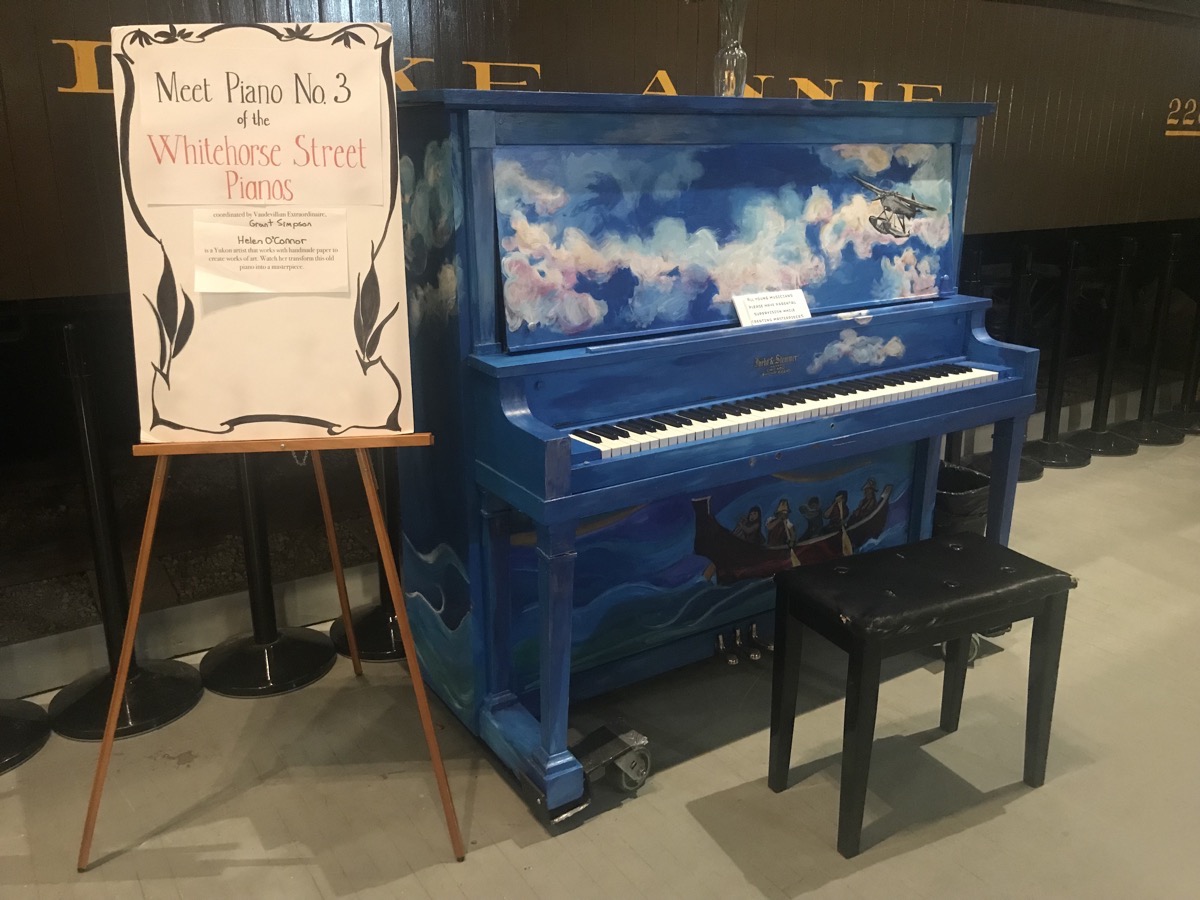
The message on this piano reads, “All young musicians please have adult supervision while creating masterpieces.”
Yukon Transportation Museum
The transportation Museum was small, but it had some interesting artifacts from the Yukon’s history.
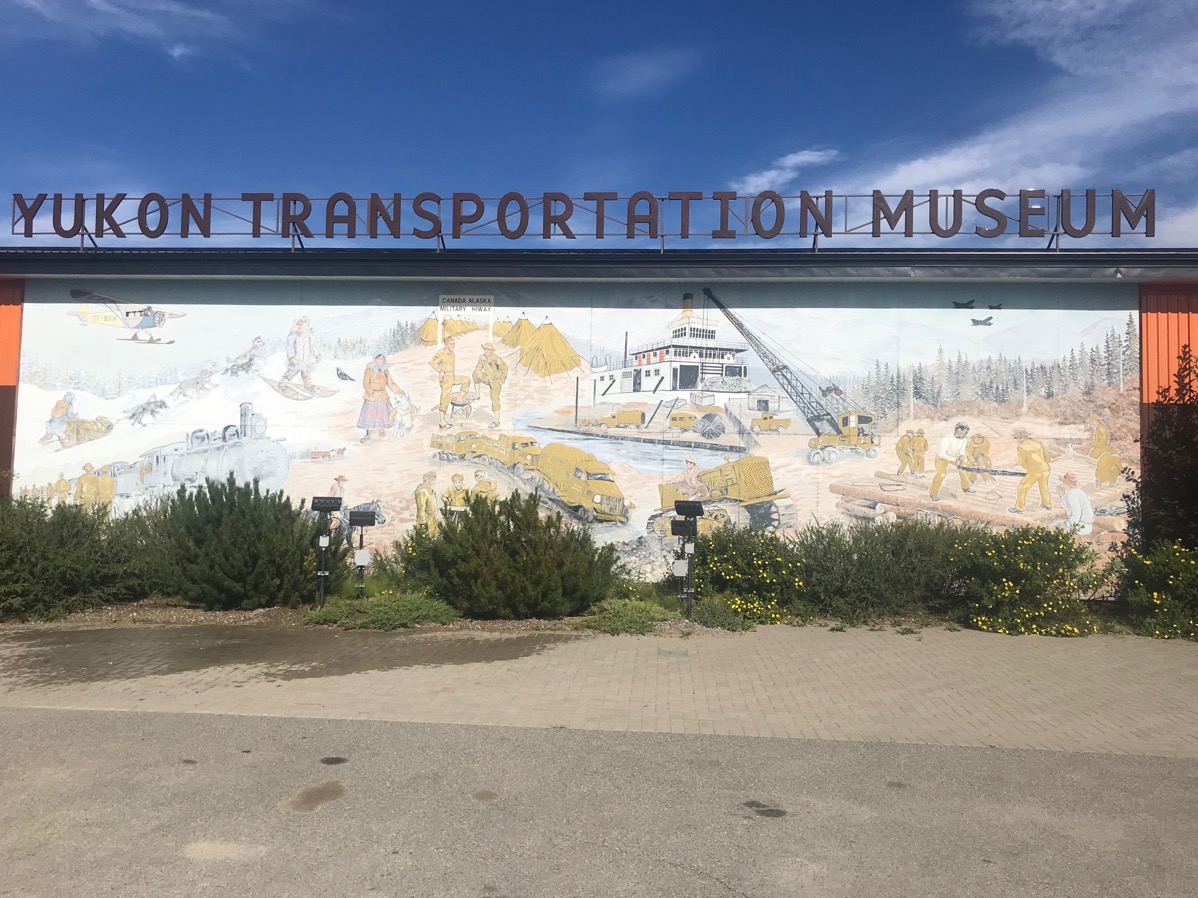
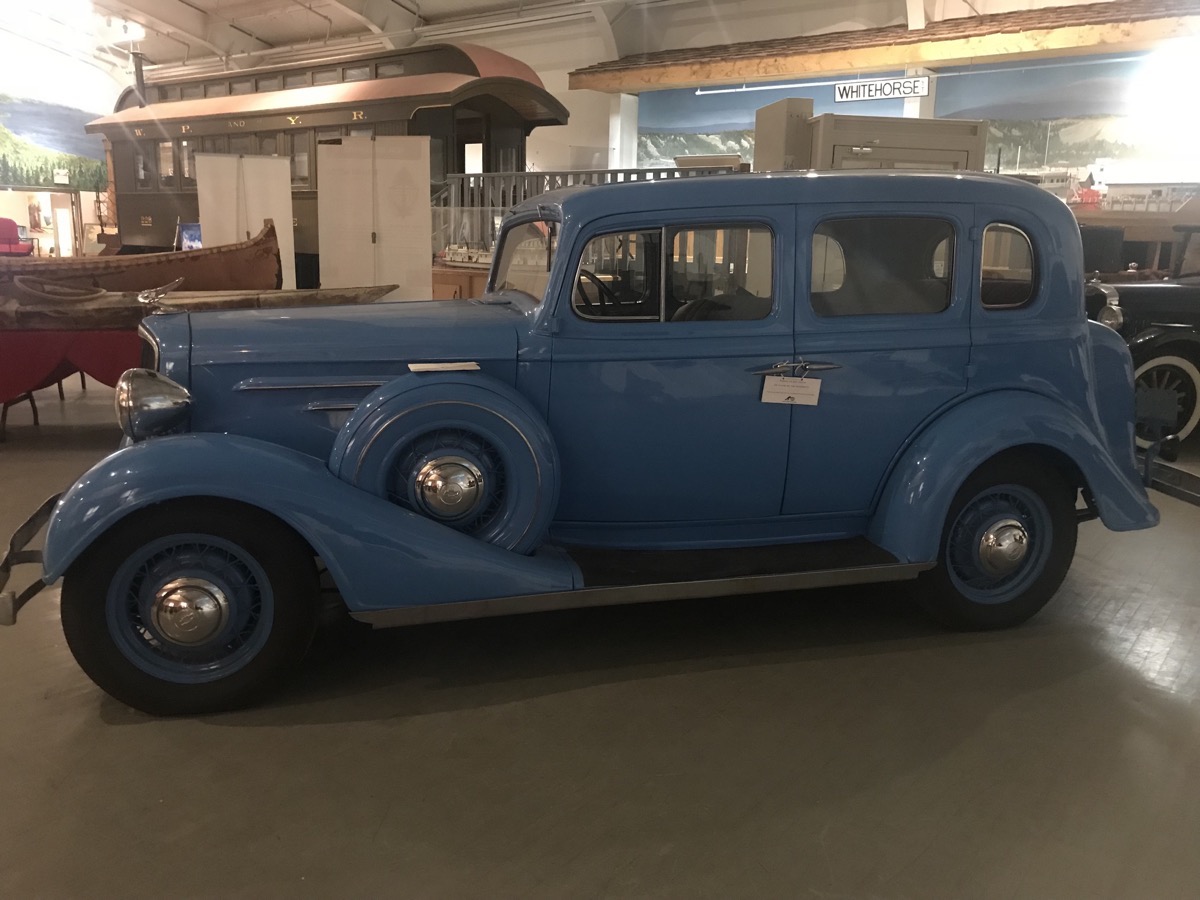
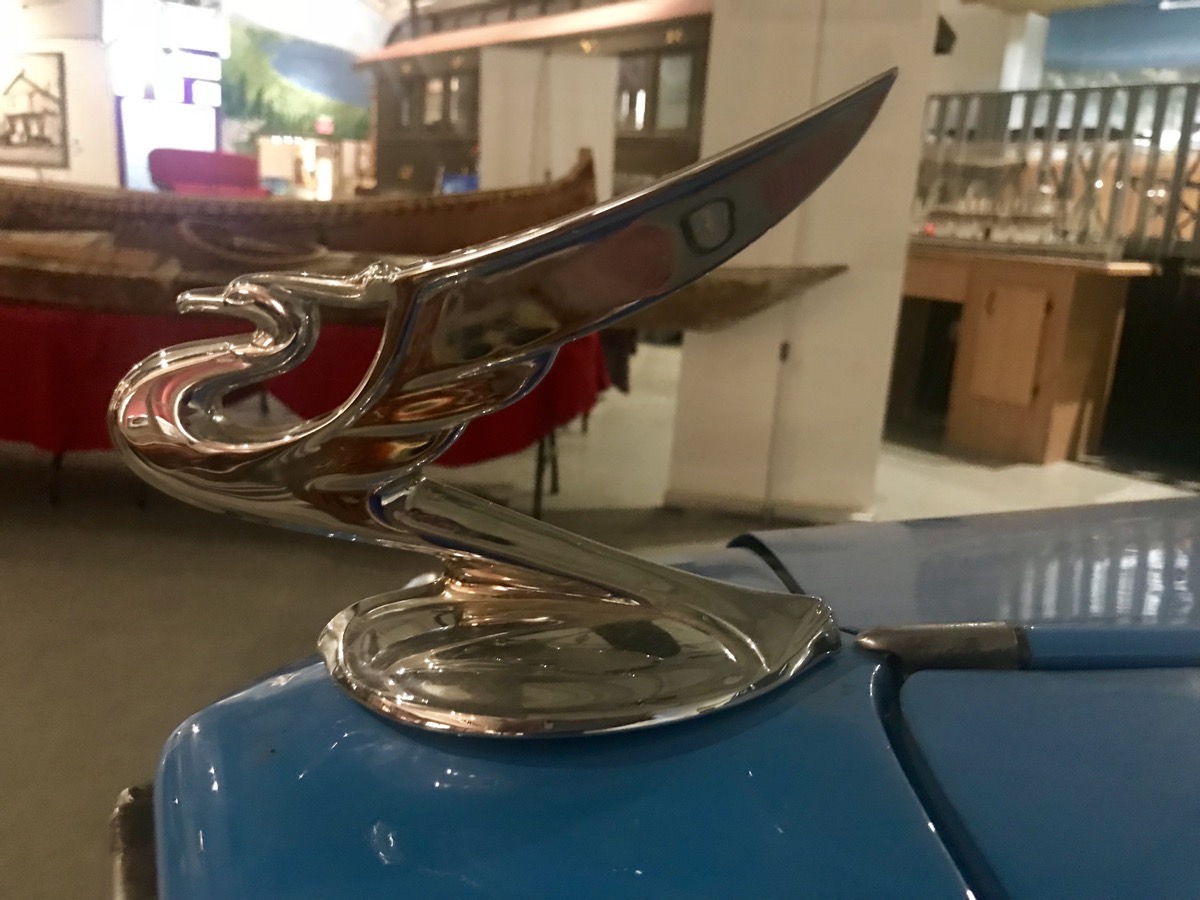
The Chevrolet’s hood ornament

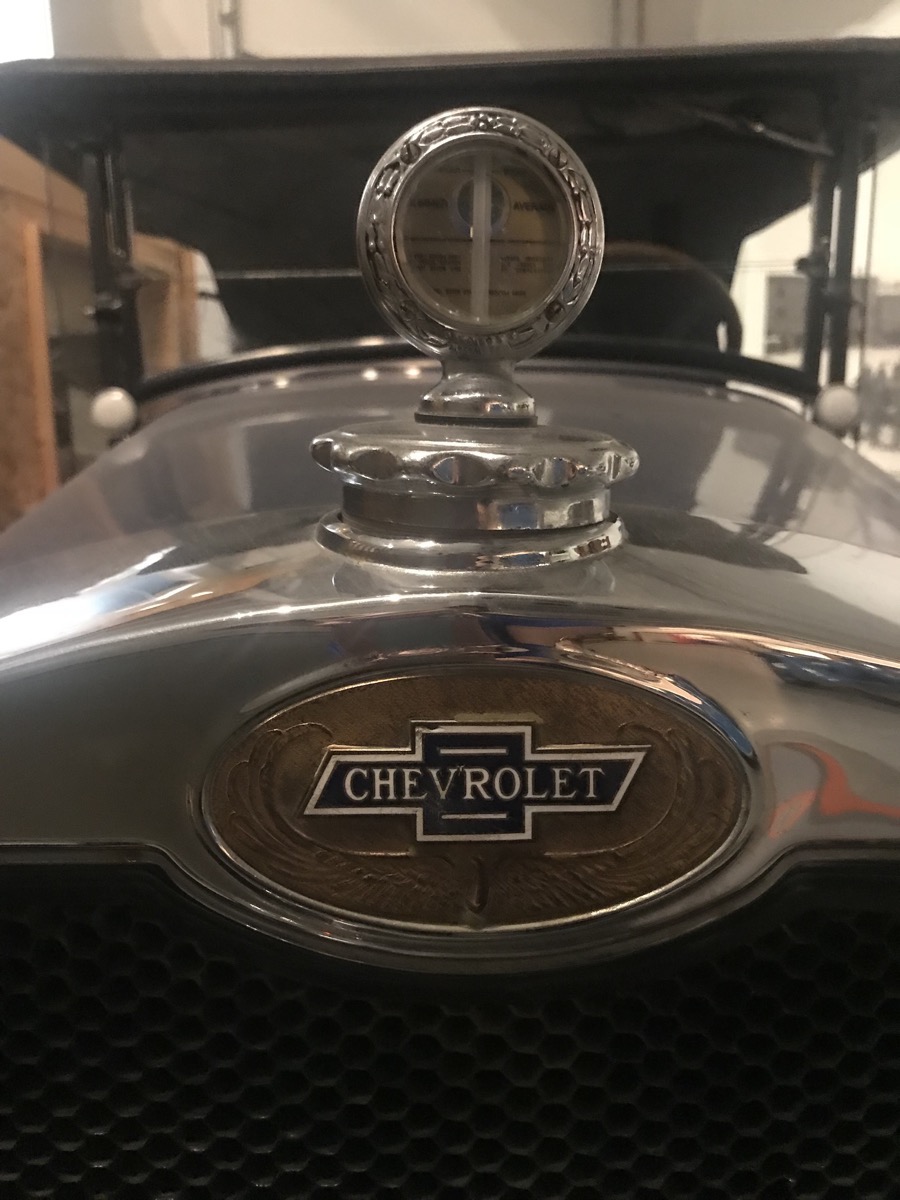

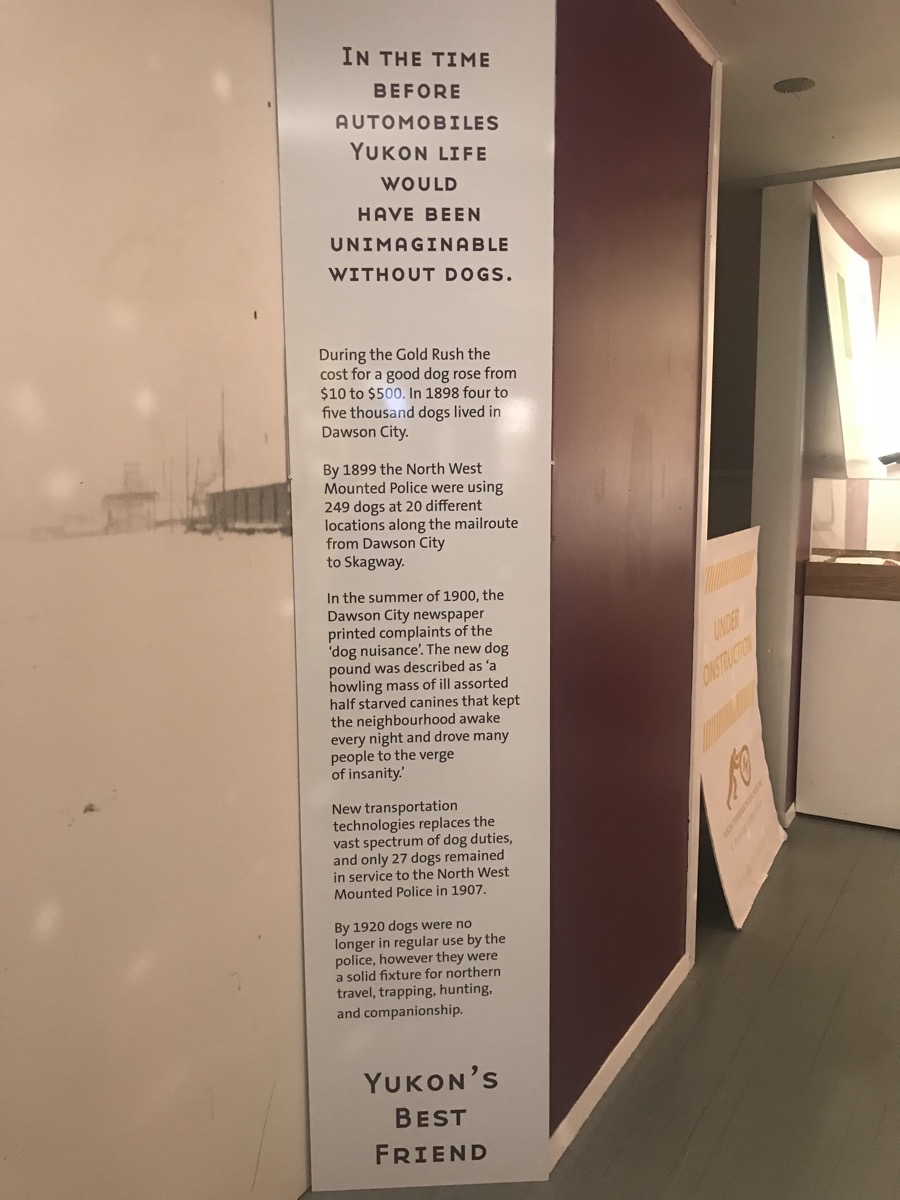
From this sign: “During the Gold Rush the cost for a good dog rose from $10 to 500. In 1898 four to five thousand dogs lived in Dawson City…”

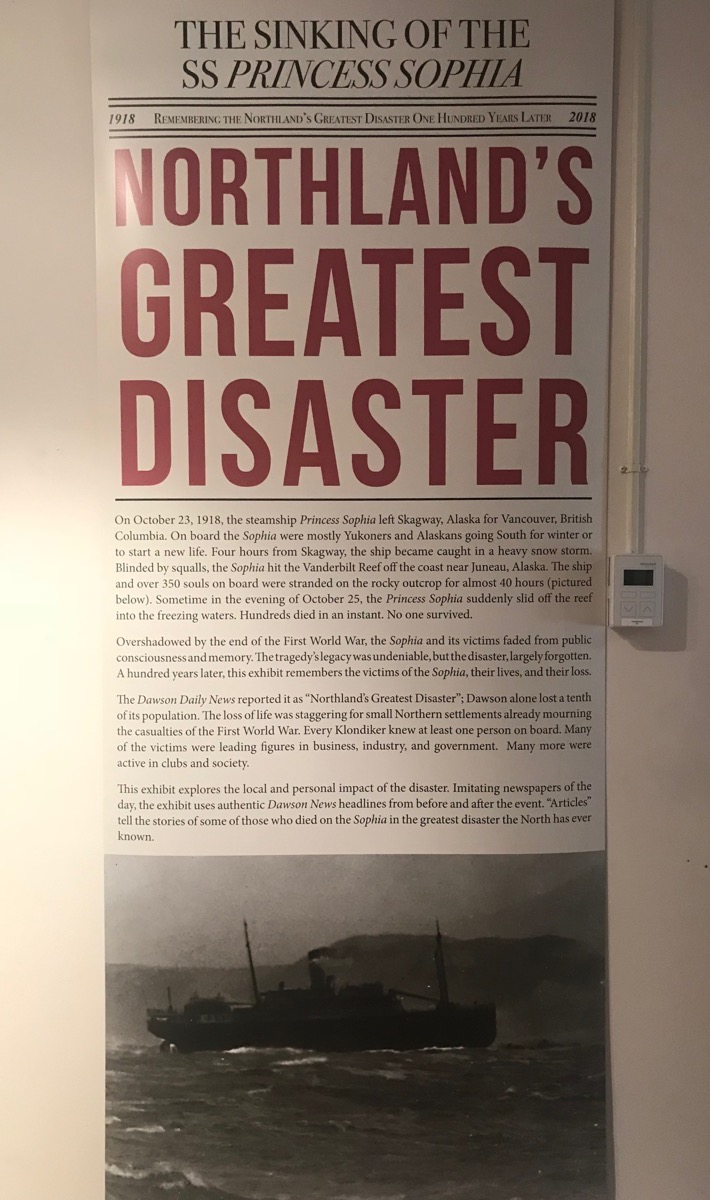
1918 - On October 23, 1918 the steamship Princess Sophia left Skagway for Vancouver. On board were mostly Yukoners and Alaskans going south for the winter. Four hours out of Skagway the ship became caught in a heavy snow storm. Blinded by squalls, the Sophia hit the Vanderbilt Reef off the coast of Juneau. Over 350 people were stranded on the rocky outcrop for nearly 40 hours. On October 25 the ship slid off the reef and slid into the freezing water, killing everyone on board.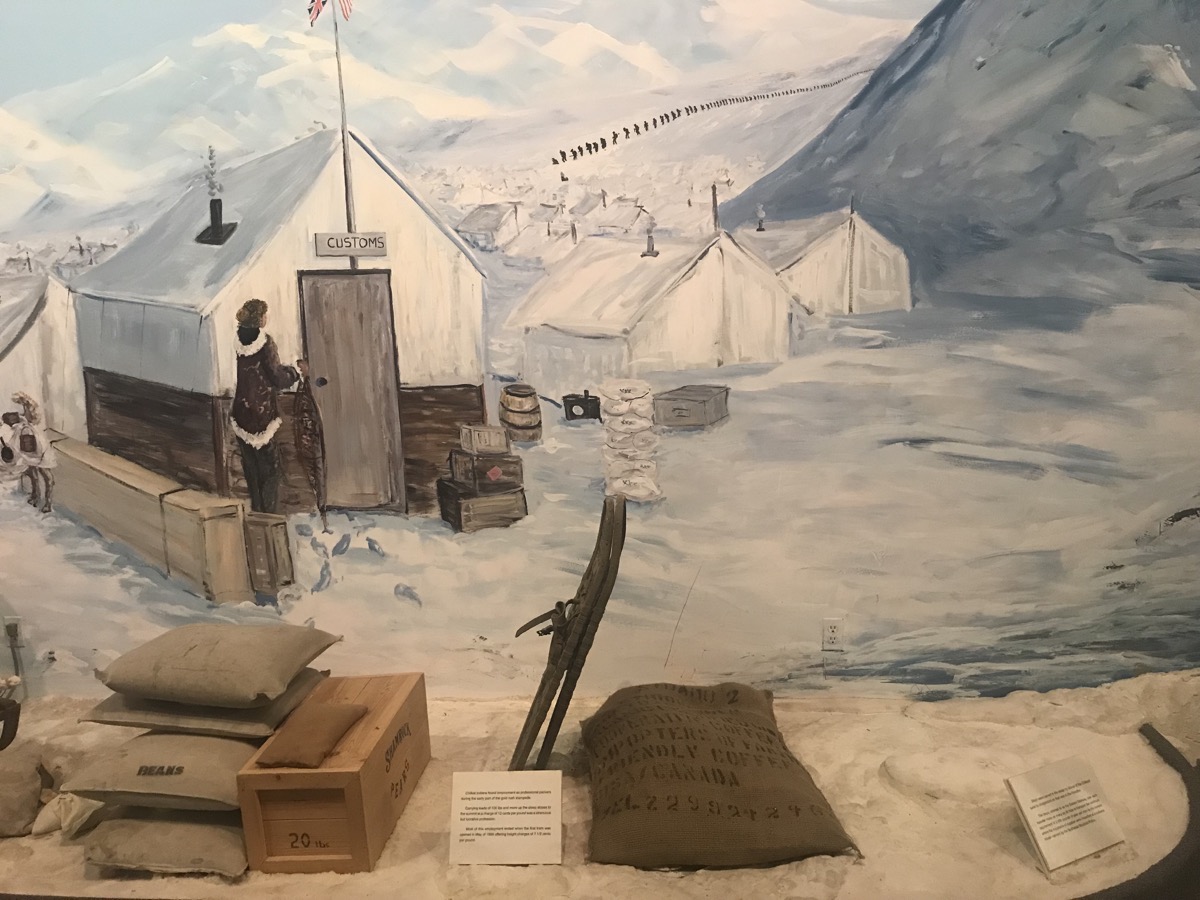
A full wall mural depicting the stash of food and supplies all men who entered Canada for the Goldrush were required to bring. The sign reads, “Chilkat Indians found employment as professional packers during the early portion of the gold rush stampede. Carrying loads of 100 lbs. and more up the steep slopes to the first summit at a charge of 12 cents per pound was a strenuous but lucrative profession.”

Another full wall mural showing the Goldrush men Hiking over the Chilhoot Pass.